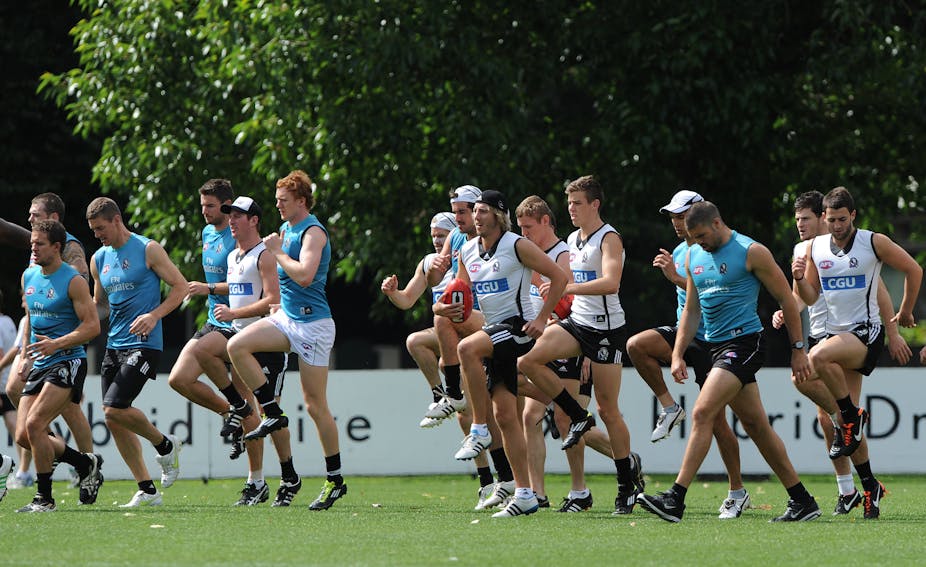Tomorrow evening in Sydney, the ball will be bounced, marking the start of the first match in the 2012 AFL season. For the 18 clubs taking the field this year, it marks the culmination of months of gruelling pre-season training including, for players at many clubs, altitude training.
In the last 20 years, research has provided good evidence that training at high altitudes can benefit endurance performance for individual athletes, such as marathon runners and triathletes. But there is little research and no consensus on the effects of altitude training on the performance of team-sport athletes.
In fact, there is no published evidence demonstrating improved team-sport performance following altitude training.
So why have more than half of the AFL teams incorporated some type of altitude training into their pre-season training? And what exactly is involved in this type of training?
Quite simply, it involves training at altitudes well above sea-level – anywhere above 1,500 metres. At higher altitudes the atmosphere contains less oxygen, which can force an athlete’s body to adapt by creating more red blood cells and haemoglobin.
When an athlete returns to sea level, they will theoretically still have an increased concentration of red blood cells (for a short period of time), increasing oxygen delivery within the blood and therefore increasing performance.
So while the use of altitude training is built on a sound scientific rationale, the question of why so many clubs are now adopting it, sans evidence for team benefits, may have a simple answer: it’s a case of “follow the leader”.
Following the use of altitude training by the Collingwood Football Club in the 2010 premiership season, the hype around altitude training has grown. What has been conveniently lost in this argument, though, is that the most successful club of the last few years, Geelong, did not use altitude training during any of their premiership years.
So, could altitude training benefit team-sport athletes?
There are some good reasons to think it may have a small benefit on team-sport performance. As mentioned, we know that, if done correctly, altitude training may increase the oxygen-carrying capacity of the blood. This should have a beneficial effect on endurance performance.
There is also some evidence that altitude training may increase an athlete’s ability to cope with lactic acid.
Researchers at the Institute of Sport, Exercise and Active Living (ISEAL) at Victoria University – of which I’m one – are currently addressing the lack of research in this team-specific area. We are using environmental exercise labs and a new “altitude hotel” – a facility that simulates high altitudes – to sort fact from fiction and provide new knowledge to Australian athletes.
Given the effects of altitude training can vary greatly from person to person, Dr Nir Eynon is also leading a project to see if we can use simple blood tests to determine, in advance, which athletes will respond best to altitude training, and which athletes will get little benefit from this type of training.
Instead of sending a whole team along to altitude training and getting mixed results, this research could help clubs to target altitude training at the half-dozen who will get the best results.
Unfortunately this work hasn’t yet netted any conclusive evidence. Clubs should make it a priority to understand what benefits they could expect from altitude training and consider whether better training or coaching may be a more effective option.
Sure, it might turn out that there are small benefits to team-sport athletes from altitude training, but this needs to be weighed against the considerable expense of sending dozens of athletes half-way around the world.

